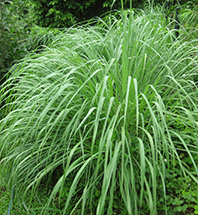| Organic Seeds | Edible Plants | Organic Pest Controls | Books | Tools, Propagation & Fertilisers | Sprouting & Microgreens | Poultry Supplies | Specials & Gift Ideas |

Top

We will send an email to this address*
when is next available
* we will use this email address only for this notification and then we will delete it.
 Home
Home
Green Harvest Organic Gardening Supplies is permanently closed as of 5pm on 1-11-2023.
We will not be taking orders by this website, in person, by phone or email. Our display garden and retail shop are closed forever.
Read more...
Phone:07 54357000
Phone calls will only be responded to sporadically and only in reference to orders placed prior to 2-11-2023. All the useful growing and organic pest management research and resources are available on this website for a while still.
 AVAILABLE FOR PURCHASE:
buy or get emailed when available
AVAILABLE FOR PURCHASE:
buy or get emailed when availableWEST INDIAN LEMONGRASS GROWING INFORMATION © Frances Michaels
BOTANICAL NAME: Cymbopogon citratus
COMMON NAMES: Lemongrass syn. Takrai (Thailand) syn. Serai (Malaysia) syn. Sereh (Indonesia) syn. Tanglad (Philippines)
FAMILY: Poaceae previously Graminae
ORIGIN: Ceylon
PLANT DESCRIPTION
It grows in grass-like clumps to 1 m tall. Lemongrass is adapted to hot wet summers and dry warm winters, is drought tolerant and will grow on a wide range of soils but prefers rich, moist loams. It dislikes wet feet. If it is damaged by frost in cooler areas, the tops should not be cut until all danger of frost has passed. This helps to protect the centre of the plant from further cold damage.
USES
Food: a good source of vitamin A, the leaves can be used for tea, the stem bases are used in curries and Thai cooking.
Mulch: it can be cut continuously for mulch during the warmer months. As an added advantage it will have some pest repellent properties.
Erosion control: it can be planted on the contour on steep banks to control erosion.
Edging: useful also as a barrier to running grasses around vegetable gardens.
PLANTING DETAILS
It rarely flowers and is usually propagated by division.
Recommended planting time: plant spring in cooler areas; in tropical areas plant during the wet season.
Plant spacing: plant rhizomes at a spacing of 1 m, with .5 m between rows.
HARVEST
Harvesting for oil distillation begins when the clumps are 4-8 months old, it is subsequently harvested every 3-4 months, and this continues for about 4 years. The fresh grass yields 0.2-0.4% oil, giving 40-112 kg of oil/ha/yr.
Not to NORFOLK ISLAND, NT, SA, TAS or WA
SORRY but due to quarantine restrictions between Australian States no plants at all can be ordered by residents of Norfolk Island, Tasmania and Western Australia. These restrictions are very important as they prevent the spread of plant pests and diseases. No potatoes, garlic, shallots, strawberries or tubestock can be sent to South Australia. No tubestock can be sent to Northern Territory.
 Home
Home
Green Harvest Organic Gardening Supplies is permanently closed as of 5pm on 1-11-2023.
We will not be taking orders by this website, in person, by phone or email. Our display garden and retail shop are closed forever.
Read more...
Phone:07 54357000
Phone calls will only be responded to sporadically and only in reference to orders placed prior to 2-11-2023. All the useful growing and organic pest management research and resources are available on this website for a while still.
DISCLAIMER:
No liability will be accepted by Green Harvest, its owners or employees as to the accuracy of any information. No responsibility will be taken for damage to property or persons due to information given about a product or technique. No responsibility will be taken for the loss of a crop or income due to information given about a product or technique.
 Shopping here is private and secure.
Shopping here is private and secure.
Copyright © 2001 - 2024 Green Harvest Organic Gardening Supplies
No part of this website may be reproduced without permission of the owner
SORRY but due to quarantine restrictions between Australian States no plants at all can be ordered by residents of Norfolk Island, Tasmania and Western Australia. These restrictions are very important as they prevent the spread of plant pests and diseases. No potatoes, garlic, shallots, strawberries or tubestock can be sent to South Australia. No tubestock can be sent to Northern Territory.
 Home
Home
Green Harvest Organic Gardening Supplies is permanently closed as of 5pm on 1-11-2023.
We will not be taking orders by this website, in person, by phone or email. Our display garden and retail shop are closed forever.
Read more...
Phone:07 54357000
Phone calls will only be responded to sporadically and only in reference to orders placed prior to 2-11-2023. All the useful growing and organic pest management research and resources are available on this website for a while still.
No liability will be accepted by Green Harvest, its owners or employees as to the accuracy of any information. No responsibility will be taken for damage to property or persons due to information given about a product or technique. No responsibility will be taken for the loss of a crop or income due to information given about a product or technique.
 Shopping here is private and secure.
Shopping here is private and secure.
Copyright © 2001 - 2024 Green Harvest Organic Gardening Supplies
No part of this website may be reproduced without permission of the owner